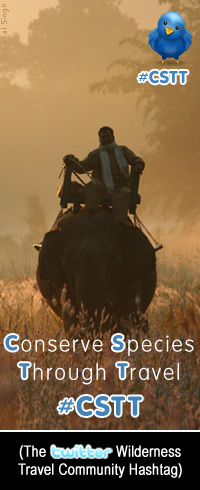Following the first relocation of the Hoolock Gibbon pair to a new habitat in Arunachal Pradesh, India (view earlier guest post) - The team at Wildlife Trust of India (WTI) and their partner organisation at International Fund for Animal Welfare (IFAW) relocated another family of gibbons to the same habitat at Mehao Wildlife Sanctuary (Arunachal Pradesh, India) early this month.
Attached is a guest post from the team at Wildlife Trust of India followed by pictures of the relocation.
———-
Another gibbon family moves to secure habitat, relocation project progresses
Roing (Arunachal Pradesh), January 10, 2011: A second family of Eastern hoolock gibbons was successfully translocated from the village of Dello to the Mehao Wildlife Sanctuary on Sunday as part of a project to save a stranded group of this endangered species of ape in Arunachal Pradesh. The family moved consisted of a male, female and a juvenile male. They were captured on January 7, and monitored overnight before being released near Sally lake in the sanctuary.
A team of veterinarians and biologists from the International Fund for Animal Welfare – Wildlife Trust of India (IFAW-WTI) are assisting the state Forest Department in the operation that aims to ensure better survival prospects for 20 stranded gibbon families in Dello. The rescue project is also supported by Noyen-Melendez Family Trust, Serenity Trust, and philanthropists Himraj Dang, Subhadra and Kannan Jayaraman. The first family comprising two individuals was moved on November 26 (read more).
Dr NVK Ashraf, Chief Veterinarian, WTI was heading the operation. “Once released, these animals will be closely monitored to record their survival and establishment of territory. Within 40 minutes of their release, they reunited and made loud calls which is typical of gibbons,” he said.
Hoolock gibbons are the only apes found in India, with their distribution restricted to the country’s northeast region. Two species have been identified here – eastern Hoolock gibbon (Hoolock leuconedys) and western Hoolock gibbons (Hoolock hoolock). While the Western hoolock is protected under Schedule I of the Indian Wild Life (Protection) Act, 1972, the occurrence of Eastern hoolock in India was only recently established by primotologists.
——-
We at Wild Navigator give our special thanks and acknowledgments to Rupa Gandhi Chaudhary (Jt. Director & Chief Marketing Officer - Wildlife Trust of India) in providing all information for this guest blog post. We continue to support their efforts in the field for Wildlife Conservation and research.
All picture © Wildlife Trust of India / Source reference - Wildlife Trust of India


































 Twitter
Twitter Facebook
Facebook RSS
RSS
Comments
Powered by Facebook Comments